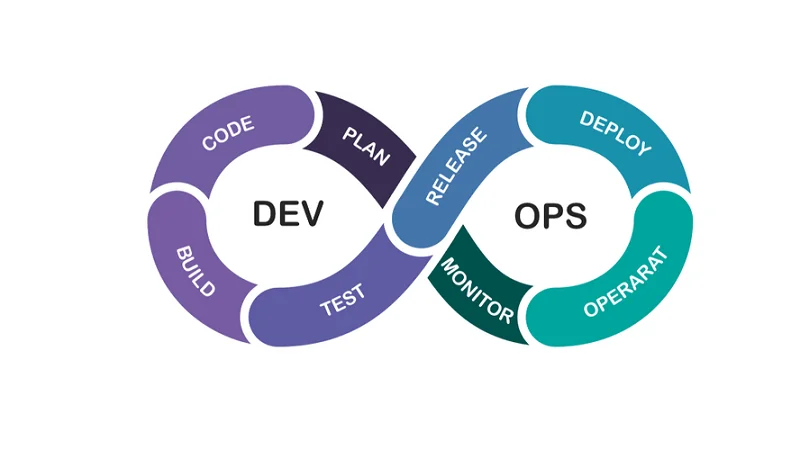After detailed testing, the conclusive product is released in phases as per the organization’s strategy. If it performs well, the organization sends out the product as a whole. After retrieving beneficial feedback, the company releases it as it is or with auxiliary improvements to make it further helpful for the customers. After the development of the product, testing of the software is necessary to ensure its smooth execution. Therefore, at this stage, all the probable flaws are tracked, fixed, and retested.

Process checks include review of timelines and expenses, as well as user acceptance. However, employee monitoring software are ideal or better suited for smaller business networks, but it is impractical for use in large business networks due to higher number of users and the potential for misuse by these users. Employee monitoring software is sometimes used in smaller business networks, but it is impractical for use in large business networks due to numerous users and the potential for misuse by these users. Sometimes used in smaller business networks, employee ________ software is impractical for large networks because of the number of users and the potential for misuse. The Software Development Life Cycle (SDLC) is basically a cost-effective process that is used to design and build good software. While outsourcing can provide cost savings, it requires close management to minimize risks.
What are SDLC models?
System assessments are conducted in order to correct deficiencies and adapt the system for continued improvement. Factors like requirements, team what is ux design culture, and project size influence the ideal methodology. Most modern teams implement agile frameworks like Scrum to accelerate delivery.
The V-shaped paradigm, also known as the Verification and Validation model, is an offshoot of Waterfall that stresses testing at each stage of development. The Spiral model is one of the most adaptable SDLC approaches since it borrows from the Iterative model and its emphasis on iteration to guide the project through its four phases repeatedly till completion. The goal of this stage is to define the full extent of the issue and generate potential answers. Costs, benefits, time, money, and so on are all relevant factors to think about. To ensure the overall success of the project, this is the most important stage.
Key benefits of utilizing the SDLC include:
The team will build functionality for the product or service, which includes creating a user interface and building the database so users can store information in your system. The conceptual design stage is the stage where an identified need is examined, requirements for potential solutions are defined, potential solutions are evaluated, and a system specification is developed. The system specification represents the technical requirements that will provide overall guidance for system design.
- All changes to a system must be formally controlled via the Forensic Laboratory change control process, as defined in Chapter 7, Section 7.4.3.
- Users will assess critical components, networking capabilities, and procedures during this phase.
- In this phase, the QA team also helps improve code coverage through automated tests and using resources from both the backend and the frontend of the system.
- Central to the creation of a new information system is the analysis of the public health agency’s business processes that the information system must support.
- Behavior-driven development, which uses testing outcomes based on plain language to include non-developers in the process, has become increasingly popular.
- For example, they may consider integrating pre-existing modules, make technology choices, and identify development tools.
- In computing, data recovery is simply known as the method of saving or salvaging data that are inaccessible, lost, corrupted, damaged or formatted from secondary storage, removable media etc.
It includes tools and processes that encourage collaboration between developers, security specialists, and operation teams to build software that can withstand modern threats. In addition, it ensures that security assurance activities such as code review, architecture analysis, and penetration testing are integral to development efforts. The synchronize and stabilize method combines the advantages of the spiral model with technology for overseeing and managing source code. This approach was defined by David Yoffie of Harvard University and Michael Cusumano of MIT.
Other methodologies combined with System Development Life Cycle
During the development phase, the project moves into the production environment, where the specifications detailed in the design document are brought to life in code. If the prior steps of the process have been well-documented, the development phase should be straightforward. In essence, the Agile approach puts a higher value on tasks that promote interaction, build frequent working versions, customers/user collaboration, and quick response to change and less emphasis on processes and documentation.

Well, in the context of software development, it’s not too far from the truth. The prototyping model builds prototypes or small replicas of the software to emulate how the final product will behave with all the functioning aspects built to behave as expected. RAD’s development model was first conceived back in the 80s to solve the need of developers looking for a more effective solution than the traditional Waterfall. One of the biggest faults of the Waterfall methodology, and one that most developers complain about, is the complexity to change core functions and software features. In RAD, the development evolution is continuous and flexible to suit changing business needs, which is a must in today’s modern environment. It is very easy to explain the system development life cycle using the analogy of pouring water into glasses.
Analysis
SDLC achieves these apparently divergent goals by following a plan that removes the typical pitfalls of software development projects. Testing must be linked back to the defined requirements to ensure that they have been met. In addition, testing allows users to identify defects before the system is deployed. A testing environment that simulates the actual use of the system should be used.

The application is installed and configured in production during this stage. The development team brings the software design to life during this critical phase. Both Microsoft and Netscape managed millions of lines of code as specifications changed and evolved over time. Design reviews and strategy sessions were frequent, and everything was documented. Both companies built contingency time into their schedules, and when release deadlines got close, both chose to scale back product features rather than let milestone dates slip.
What Is SRS in Project Development?
Prototyping tools, which now offer extensive automation and AI features, significantly streamline this stage. They are used for the fast creation of multiple early-stage working prototypes, which can then be evaluated. AI monitoring tools ensure that best practices are rigorously adhered to. A converged infrastructure definition consists of multiple components operating together as one, such 🖥 as servers, storage, networking, and management software. Developers should master secure coding frameworks and API security techniques. They should also use automated methods to discover security problems in their code and the open-source libraries they use.
This process is repeated again and again, with each iteration yielding a new version of, for instance, the software. Regardless if the team works with a document of functional requirements or a handwritten list, everyone must be able to understand each proposal, and each comment, to be involved. A system is, at the very least, a component, and possibly a combination of various components of information technology.
What is system development life cycle security?
In SDLC, documentation is crucial, regardless of the type of model chosen for any application, and is usually done in parallel with the development process. Some methods work better for specific kinds of projects, but in the final analysis, the most crucial factor for the success of a project may be how closely the particular plan was followed. The Big Bang model in SDLC is a term used to describe an informal and unstructured approach to software development, where there is no specific planning, documentation, or well-defined phases. SDLC specifies the task(s) to be performed at various stages by a software engineer or developer. It ensures that the end product is able to meet the customer’s expectations and fits within the overall budget. Hence, it’s vital for a software developer to have prior knowledge of this software development process.
Then, they may make use of predictive analysis and AI simulation tools at this stage to test the early-stage validity of an idea. This analysis helps project managers build a picture of the long-term resources required to develop a solution, potential market uptake, and which obstacles might arise. System Design is a crucial stage in the SDLC as it bridges the gap between requirements analysis and system development. It transforms user needs and functional specifications into a detailed technical plan that guides the development team. Proper system design ensures that the developed system aligns with the desired functionality, performance, and scalability requirements.
System Design is a critical stage in the SDLC, where the requirements gathered during the Analysis phase are translated into a detailed technical plan. It involves designing the system’s architecture, database structure, and user interface, and defining system components. The Design stage lays the foundation for the subsequent development and implementation phases. If you are already familiar with the software development life cycle, you will have a good idea of what the system development life cycle entails. The system and software development process are very similar to one another. In traditional software development, security testing was a separate process from the software development lifecycle (SDLC).


